1. Overview
Render Network is at the forefront of the decentralized computing revolution, offering a peer-to-peer marketplace for GPU rendering power. This innovative approach provides a more efficient, cost-effective, and scalable solution compared to traditional centralized providers like AWS and Google Cloud.
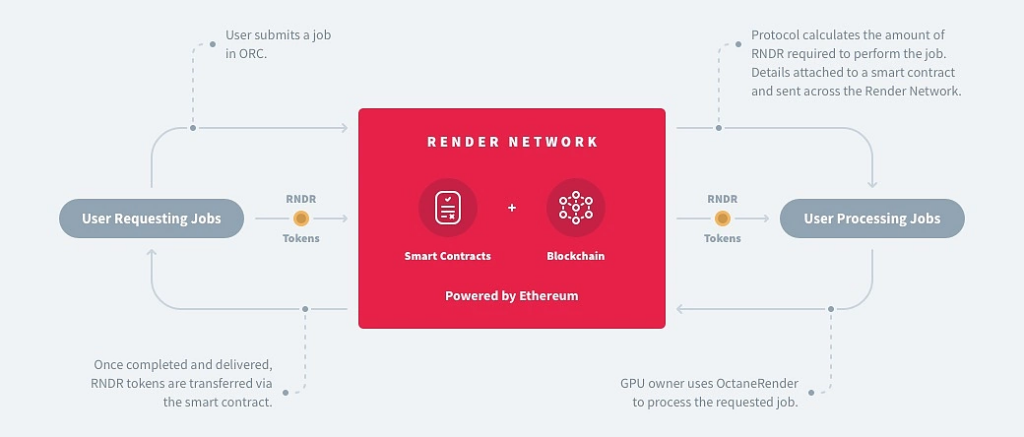
There are two key parties involved in Render’s GPU marketplace:
- Creators: Individuals and organizations seeking to access powerful GPU processing power for their rendering needs.
- Node Operators: Users who rent out their idle GPUs to Creators in exchange for compensation in Render’s native tokens.
Render Network’s reputation-based system for Node Operators allows Creators to select high-quality GPUs from a multi-tiered pricing structure, ensuring they can access the resources they need at a competitive cost.
Proof of Render (POR)
The POR consensus algorithm coordinates operations and the node operator commits their computing resources GPU to process the task, a graphics rendering job. Upon delivering the job, the POR algorithm updates the node operator’s status, including changes to the reputation score based on the quality of the task delivered. Render’s blockchain infrastructure facilitates payments for jobs, providing transparent and efficient settlement rails for suppliers and buyers to transact through the network token.
In November 2023, Render Network made a strategic move by migrating its platform to the Solana blockchain. This transition has allowed the project to focus more intensively on AI and machine learning applications, leveraging its decentralized GPU infrastructure to support the growing demand for powerful computing resources in these rapidly evolving fields.
2. State of the network
Render Network has successfully rendered ~35.2M frames to date.
At the time of writing, the Render Network has processed up to 35.2m frames and has grown to 5600 total nodes since inception. Just under 69k RENDER has been burned, a process that takes place during the distribution of work credits to node operators.
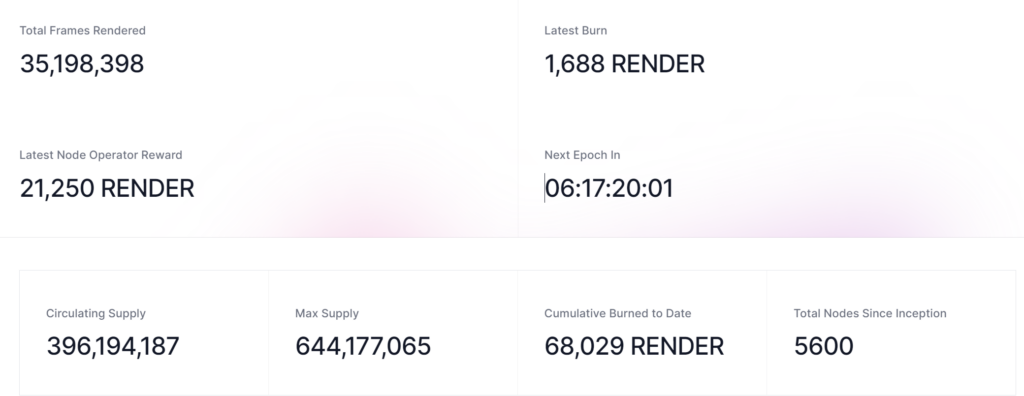
The number of active Render node operators in Q2 declined by 14% QoQ.
The Render Network’s weekly active node operator count reached an all-time high of 1.9k in Q1 2024. Despite a 14% decline in active node operators in Q2 2024, Render Network’s overall node operator count has remained relatively flat, suggesting stabilization of the network.
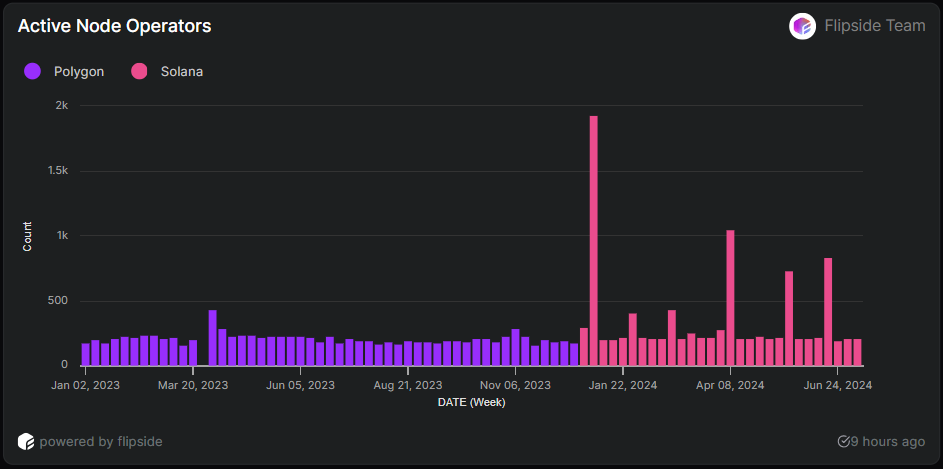
Node operator rewards are down 20.7% QoQ
Node operator rewards on the Render Network saw a significant spike in early 2024. In the first week of January, the weekly reward reached a high of 228,000 RNDR tokens. This was the second-highest weekly reward amount recorded by the network, followed by a 290,000 RNDR payout back in April 2023.
The most significant factor was the long-awaited launch of Render’s new Burn and Mint Equilibrium (BME) mechanism, which took some time to go live after the network migrated to the Solana blockchain. The BME burn only began in January 2024, coinciding with the spike in weekly node rewards.
However, it’s worth noting that node operator rewards in Q2 were down 20.7% QoQ.
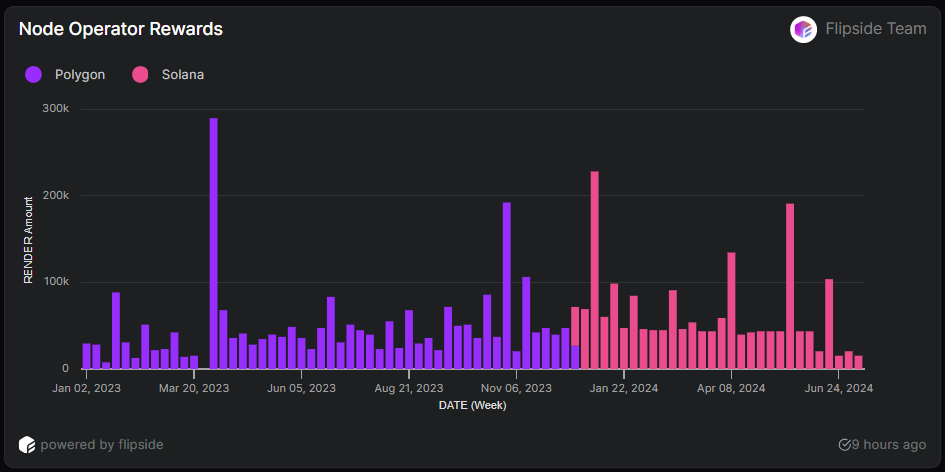
The pace of RNDR burns has remained relatively stable, with slight increases in recent weeks.
Render Network’s RNDR token burn rate has slowed down since spiking dramatically in early January. This gradual decrease in RNDR burns can be largely attributed to the launch of the BME mechanism, which has created a more stable environment for RNDR burns by balancing the supply and demand dynamics more effectively. The BME model ensures the token burn rate closely correlates with actual usage on the network, leading to more stable periods.
In addition to the impact of the BME, the slowdown in RNDR burns may also be partially due to growing competition in the decentralized computing space. While Render was an early leader in this sector, it is now attracting more new players, which could be eroding some of Render’s market share.
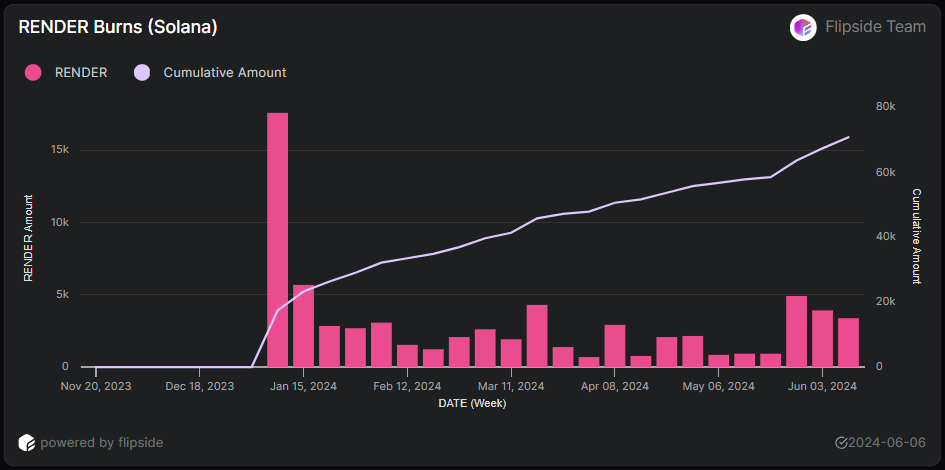
3. Conclusion
The network’s recent migration to the Solana blockchain and the launch of its BME mechanism has helped to stabilize the RNDR token dynamics, though the project faces increasing competition in the market. As the demand for decentralized computing resources continues to grow, Render Network’s ability to adapt and maintain its competitive edge will be crucial to its long-term success.
Additionally, Grayscale has launched a new Decentralized AI Fund, in which the Render token makes up a 24.9% portfolio holding. This drives the growth of the Render network and its users in the future.
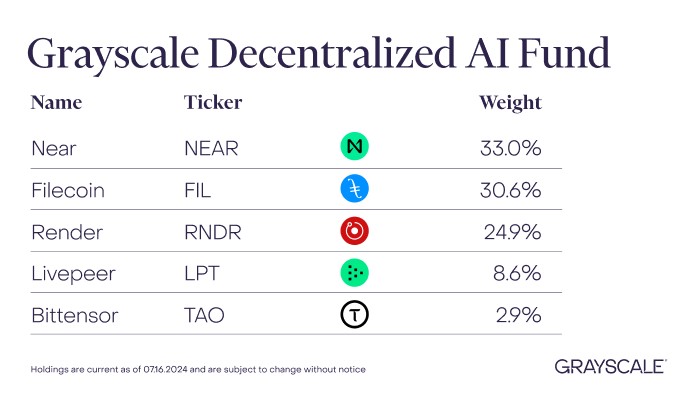
The information provided in this article is for reference only and should not be taken as investment advice. All investment decisions should be based on thorough research and personal evaluation.


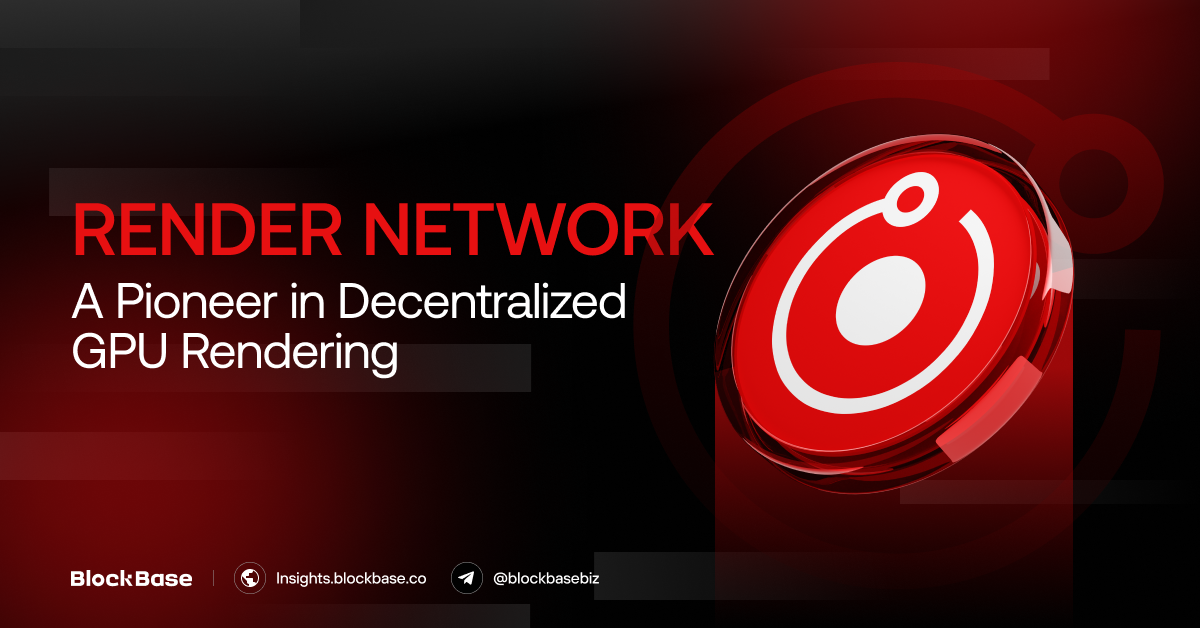
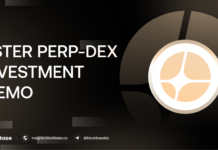


[…] https://insights.blockbase.co/render-network-a-pioneer-in-decentralized-gpu-rendering/ – Corroborates Render Network’s decentralized GPU infrastructure and its operation on the Solana blockchain, as well as the platform’s peer-to-peer marketplace for GPU rendering power. […]
Comments are closed.